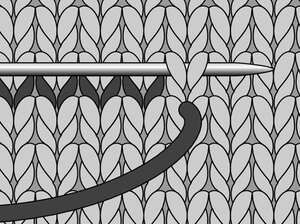Work Duplicate Stitches in Knitting
Body
Duplicate stitches are a form of embroidery that can be easily worked on fabric as well as your knitted and crocheted fabric. To work these stitches, you do not require knitting needles or crochet hooks but your finishing needles also known as darning and wool needles. The duplicate stitch technique gets its name because of the way the stitches are worked. The stitch follows the path of the stitch (garter or stockinette pattern) and duplicates the path of the underlying knitting. The duplicated stitches serve various purposes in a knitting project, majorly adding to the utility and the beauty.
If you are new to the wonders of duplicate stitches, in this blog post, we'll look at how to work the basic stitch, their uses, and some tricks.
How-to Make Duplicate Stitches
After you’ve finished your knitted fabric and the project is of your knitting needles. Thread your yarn through the finishing needle. Make sure that the finishing needle should be a size smaller than the knitting needle used for making the fabric. This is the same for crochet too.
Draw up the needle from the back of the knitted fabric and go through the same path of the stitch below. If it's a reversible pattern make sure to start from the seam or go as invisibly as possible making the stitches on the front side (RS) of the project.
Gently snug up each duplicate stitch and yet leave plenty of yarn on the fabric surface. This will reduce the chance of the underlying color peeping through as well as avoid the problem of collapsing the fabric with tight stitches.
In regards to getting to the next stitch, the rule is always to take the shortest route so that can reduce the bulkiness added to the fabric.
To work duplicate stitches, you either go row-wise or column-wise. This depends on the effect you would want the stitches to have to point up or down. Also, the direction can be determined by the purpose, whether it's for utility or adding to the beauty. In case, you are following a knitting pattern, you will have the exact instructions.
How to Use Duplicate Stitches
There are two uses of duplicate stitches - utility and decoration. Another way the stitch technique is used is to weave in yarn ends. This also works wonderfully for projects to introduce different yarn colors.
Mending with Duplicate Stitches -
Duplicate stitches for utility are also called "Swiss darning" and "invisible mending." Working another strand of yarn into already knitted stitches thickens and stiffens the fabric. For utility use, this isn't much of a problem. With this trick, a worn fabric for example a dearly-loved used sock heel or elbows of a sweater can be mended and used to strengthen the fabric. The color match is very important for the fix to be undetectable. Many times when patching a knitted fabric a long time has passed since its making so the same yarn might not be found. But, then another shade might not be a problem if the area is not visible. If the patching is for a very noticeable area of the knitted fabric, the difference in the yarn shade might cause an ugly look. A pixelated appearance also spoils the look but we have a trick to avoid this.
Decorating & Adding to the Beauty -
The second use of duplicate stitches is on a perfectly sound fabric to add color decoration. Naturally, this uses overlap. You can easily make alphabets or images and other patterns. Here using a contrasting yarn shade is not a big problem. Here you can choose a finishing needle and yarn bigger than the knitting needle and yarn used in the project.
To combine utility with decoration, a colorful flower worked over a thinning elbow or sock heel, or a little heart over a moth hole is a wonderful option.
Weaving in yarn ends -
The technique of duplicate stitches works for weaving in yarn ends. Thread the yarn tail and then take it through the knitted stitches. If you have a seam at the edge then bury the yarn tail end there or go through the stitches in opposite direction. There are different ways to weave in the ends according to the stitch pattern.
Color Changes -
When you have multiple colors, you’ll have multiple yarn ends and then you can use duplicate stitches to join the new yarn end.
The tricks for smooth Duplicate Stitches
A secret trick to smooth duplicate stitching is to make a half stitch. As in cross-stitch embroidery, you can make half a stitch, so in duplicate stitch, you can have a partial stitch too. Knitted stitches form a V. To make a half stitch take the needle through the legs of the V. This little trick helps smooths out the curves, reducing the pixelated stair-step appearance. This trick works best in colorwork patterns. But then the stiff knitted fabric is not preferred by knitters who are experts in all types of colorwork knitting.
With this, get ready to make duplicate stitches in knitting. Be it the purpose of utility or adding to the beauty, these stitches are of great help. Just makes sure to work with a round-tip finishing needle that goes easily through the stitches and fabric. Lantern Moon’s ebony wood finishing needles make your stitch-making easy and smooth.















Comments